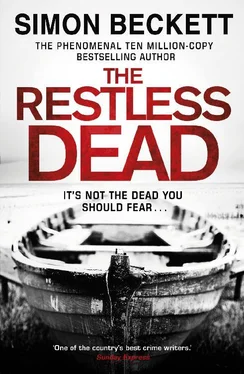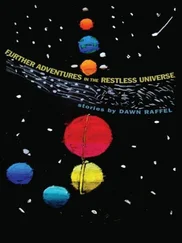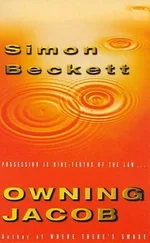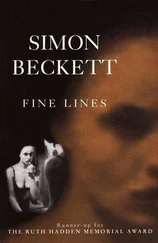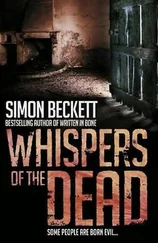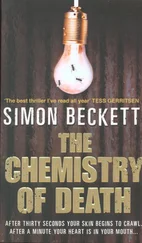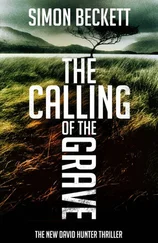Leo Villiers.
I wondered if the man lying in the mortuary had appreciated the aesthetics of the weapon that killed him.
Lundy had attached a short note with the image: FYI — barrel 32 inches. Frears says too long for estuary body to reverse and reach trigger. Assuming the shot had come from Leo Villiers’ missing Mowbry, as seemed likely, that ruled out any lingering question of suicide. Not that there had been any serious doubt once we knew the body wasn’t his.
I went to the file containing the post-mortem report. It wasn’t ideal reading material to accompany food, but my work had long since cured me of being squeamish. Even so, for once I found it hard to concentrate. My mind kept drifting to Rachel, until the words on the glowing screen finally snared my attention. I lowered the fork, a piece of chicken still speared on it, as what I was reading began to sink in. The broken arm and leg I’d noticed when the body was on the barbed wire weren’t the only damage it had sustained. There were more injuries. A lot more, I realized, reaching for a pen and paper. I’d noticed that the head seemed to hang unusually loose, even for the length of time the remains had been submerged. With its thick layers of muscles and tendons, it’s usually the last extremity to fall away. Now I saw that two of the vertebrae in the neck were broken, with what was obviously extreme force. And the right tibia and fibula weren’t only snapped mid-shin, they’d been fractured at the knee as well. That same leg also had a dislocated hip, the ball-like head of the femur wrenched completely from its socket.
I tapped my pen against my chin. It was possible the multiple trauma could have been caused by the drifting body being struck by a boat, which might also explain the propeller-like wounds to the face. But it would have to have been a very forceful impact. Probably more than one, I thought, considering the extent of the injuries.
Then I saw something that really made me sit up.
I re-read it, then opened the file containing the mortuary X-rays. The extent of the sharp trauma injuries to the facial bones were evident even from the ghostly 2D images. The boat propeller — if that’s what it was — had inflicted massive damage, making any potential reconstruction a complicated task.
But that wasn’t what interested me. The world shrank around me, ceasing to exist outside the glow of my laptop screen as I enlarged the X-ray of the cranium. I zoomed in on one particular area of damage, chafing at the restricted views the flat X-rays provided. Then, like a pattern emerging from a puzzle, I saw it.
‘And how did you get there?’ I murmured, the half-eaten casserole forgotten as I stared at the screen.
I was too wired to relax after that. My mind was still buzzing when I went to bed, thoughts of Rachel flitting around with ideas about the case. For the first time I felt as though a chink of light was beginning to break through, that things were falling into place for my own life as well as the investigation. I should have known better.
Stacey Coker never came home that evening.
As Lundy related it later, Coker had gone back home to confront his daughter after storming out of Creek House. His wife had divorced him years before, so now he and Stacey lived alone in a bungalow not far from the marine salvage yard. When he found his daughter wasn’t there, he’d tried calling her without success. Then, opening a pack of beer, he sat fuming while he waited for her to come home.
Except Stacey never arrived.
To begin with Coker wasn’t worried. Even when phone calls to her friends failed to locate her, he was angry rather than concerned. It wouldn’t be the first time his daughter had persuaded friends to lie for her. Only later, as their repeated denials began to ring true, did he start to realize this was different. Even so, convinced his daughter was simply putting off facing him, it wasn’t until the early hours of the morning that he went out looking for her.
After banging on the doors of the friends most likely to be harbouring her, Coker remembered I’d seen Stacey driving past the boathouse. There were two ways back to Cruckhaven from there. One was what passed for the main road, which Coker had taken himself earlier. Not having seen any sign of his daughter then, he now took the other route. This cut further into the Backwaters, less accessible but better for anyone who didn’t want to risk their distinctive car being seen. About a mile before he reached the boathouse, Coker’s headlights picked out a gap in the hawthorn hedgerow by the roadside. Even then he almost drove past, but some instinct made him pull over. Leaving his engine running so his headlights shone on the gap, he got out and found fresh breaks in the branches. The creek beyond was full and dark, but he made out a paler shape sticking from the black water.
It was the rear bumper and one back wheel of a car.
By the time the police arrived the tide was ebbing, and enough of the car was visible to see that it was small and white, with a red racing stripe. Tyre marks showed where it had left the road on the bend, before tipping over as it went down the shallow bank. It had come to rest upside down in the creek, on its roof but canted at an angle. The driver’s door was open, but — as Coker had already established after plunging into the water himself — there was no sign of its occupant. Only a handbag remained inside the car, containing Stacey Coker’s purse and driving licence.
‘It looks like she took the bend too fast, lost control and then rolled it down the bank,’ Lundy told me.
It was the following afternoon and we were in the hospital cafeteria, at an isolated table set away from any other diners. Not that there were many: it was after the lunchtime rush and half the tables were empty. Lundy had dropped into the mortuary unannounced to tell me what had happened. He’d seemed ill at ease as he’d stood by the examination table, rattling the loose coins in his pocket as I’d cut away the decomposed soft tissue from the second body and begun to cut through the connective tendons and cartilage of the major joints. It was unusual for a police officer to be bothered about such things, and he’d showed no such qualms when either of the bodies were being recovered. But he’d seemed relieved when I suggested we take a break for lunch, so we’d headed for the cafeteria.
‘The seat belt was unfastened, so it’s possible she managed to undo it and crawl out,’ he went on, emptying a second sachet of sugar into his polystyrene cup of tea. ‘Or she didn’t bother fastening it and got thrown through the door as the car flipped. Either way, we’ve got to assume she got carried out by the tide or we’d have found her by now.’
I was still trying to absorb this new tragedy. I’d taken the more direct route to the mortuary that morning, and so missed the cordoned-off area of the Backwaters where Stacey Coker’s car had been found. So I’d been unaware of what had happened until Lundy arrived, wanting to hear my version of events the previous evening. Coker had told the police about his daughter speeding past the boathouse, which made me the last person to have seen her before the accident. And, quite possibly, the last to see her alive.
‘How fast was she going?’ Lundy asked.
I remembered the tug of air as the car flashed past, almost clipping me. ‘She was gone in a second, so it’s hard to say. But fast.’
Lundy nodded, morosely. He looked tired, his eyes more pouched than normal and an unhealthy colour to his face. But then he’d had a late night. ‘Figures. She’s a bit hot-headed by all accounts, and she’d just had a row with Jamie Trask. She’s already got points on her licence for speeding.’
Читать дальше
